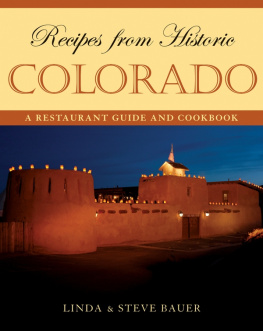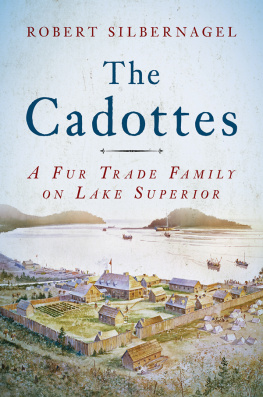Published by The History Press
Charleston, SC
www.historypress.com
Copyright 2018 by Robert Silbernagel
All rights reserved
Front cover, top, left to right: Cowboy Joe Harris in Grand Junction. Date unknown. Museums of Western Colorado; a mail truck crossing deep wash in eastern Utah, circa 1916. Museum of Moab; Uintah Railway train crew with a locomotive in Atchee, Colorado, circa 1915. Museums of Western Colorado.
Front cover, bottom: Carnegie horses encounter an automobile near Jensen, Utah, circa 1915. National Park Service, Dinosaur National Monument.
First published 2018
e-book edition 2018
ISBN 978.1.43966.433.9
Library of Congress Control Number: 2017963921
print edition ISBN 978.1.46713.810.9
Notice: The information in this book is true and complete to the best of our knowledge. It is offered without guarantee on the part of the author or The History Press. The author and The History Press disclaim all liability in connection with the use of this book.
All rights reserved. No part of this book may be reproduced or transmitted in any form whatsoever without prior written permission from the publisher except in the case of brief quotations embodied in critical articles and reviews.
This book is dedicated to all those who are fascinated by the Colorado Plateau and the stories of those who came before us.
FOREWORD
Robert Silbernagel, known to his friends as Bob, was a reporter for the Daily Sentinel in Grand Junction, Colorado, when I first met him in 1988. He covered the county beat at the time. The Museum of Western Colorado was on his radar, and I was the museums executive director.
At the time, the museums board of directors was negotiating with the City of Grand Junction and a private landowner for property on which to build a new museum complex. Meetings with the landowner were delicate, and it was critical that we maintain a level of secrecy. It was then Bob called and introduced himself to me as a reporter and stated that he was doing a story on the museums planned move to the property in question (and here I thought it was secret). No, absolutely not, you cant run with that now, I said. Well, thats not something you tell a reporter. Bob politely replied that the news was already on the street. He wanted a quote from me, but more importantly, he said he wanted to get the story right.
The story ran, and the deal fell through, but not because of the story. This was my first recollection of working with Bob, and what I remember most about it was Bob saying, I WANT TO GET IT RIGHT.
Since those days, Bob and I have become good friends, sharing stories and kicking around the Colorado Plateau, chasing down stories of early fur traders and hermits or remnants of wrecked locomotives. Stories about those historical items have appeared in his newspaper columns and in this book.
From his position as reporter for the Sentinel, Bob was later promoted to editorial page editor, a prestigious position he held for nineteen years. He became an important voice of western Colorado opinions and issues, while his passion for history continued to occupy much of his spare time.
As Bob was writing about the pressing issues affecting western Colorado, I was working with my museum staff in building a new museum on Main Street called Dinosaur Valley. Later, those efforts evolved into another museum in Fruita, Colorado, just west of Grand Junction. The Devils Canyon Science and Learning Center focused on dinosaurs and fossils of western Colorado. Bob has continued to take great interest in regional history and the major fossil finds near Grand Junction, some of which had made headlines back east in the early twentieth century.
Occasionally, Bobs editorials would encourage and applaud the museums efforts to reclaim its title as the Dinosaur Capital of the West. After all, according to an early article in the Boston Globe, it was in Grand Junction where the worlds largest dinosaur was discovered.
While I was working at the Fruita dinosaur museum, I suggested that Bob write a book about the history of dinosaur discoveries of the area. Bob took that to heart and became relentless in pursuit of the history that put Grand Junction paleontology on the map. After many interviews and considerable research, Bobs first book, Dinosaur Stalkers: Tracking Dinosaurs in Western Colorado and Eastern Utah, was published in 1996 in collaboration with the Museum of Western Colorado, U.S. Bureau of Land Management and Dinamation International Society.
In 2011, the University of Utah Press published Bobs book Troubled Trails: The Meeker Affair and the Expulsion of Utes from Colorado, which was widely acclaimed. Bobs meticulous research revealed little-known facts about a tragic incident and recounted Ute versions of the affair. His research even took him by horseback along some of the oft-forgotten trails used by the Utes as they held captive three women and two children for twenty-three days.
Bob retired from the Sentinel in 2014 and finally had the time to pursue his passion, western history. The Sentinels publisher enthusiastically supported his desire to continue writing a history column for the paper. Bobs columns have taken readers throughout Colorado and eastern Utah on one adventure after another. He has spent countless hours in museums, libraries and archives in the West. Why? Because he WANTED TO GET IT RIGHT.
Nostalgia for the past seems to bring us a measure of relief from a chaotic world. Bobs history columns have become increasingly popular in the Daily Sentinel. With anticipation, we readers look forward to perusing his columns first before moving on to the news of the day. Many times, as I was preparing for a program or to lead a history tour, I have wished that I had saved his articles.
Now, we readers are truly fortunate to have a book based on many of Bobs columns in the Sentinel, columns that relate human efforts to live and travel on the Colorado Plateau. It is the kind of book you will be proud to have on your table or in your library. No doubt it will be dog-eared and well-used before long.
As you read with fascination the stories of the past in this book, you will appreciate even more that Bob WANTED TO GET IT RIGHT.
MIKE PERRY
Retired Executive Director
Museums of Western Colorado
Fruita, Colorado
ACKNOWLEDGEMENTS
No author works alone, particularly when it comes to researching and writing about history. Many people contribute ideas, share books and articles and offer research assistance and encouragement. For the stories that appear in this book, several people and organizations deserve special recognition.
First, the chapters in this book are based on the history columns I write for the Daily Sentinel newspaper in Grand Junction, Colorado. The continuing support of Jay Seaton, publisher of the Sentinel, Mike Wiggins, the managing editor, and many others who help edit and publish my columns has been invaluable. So has the access to the Sentinels archives.






